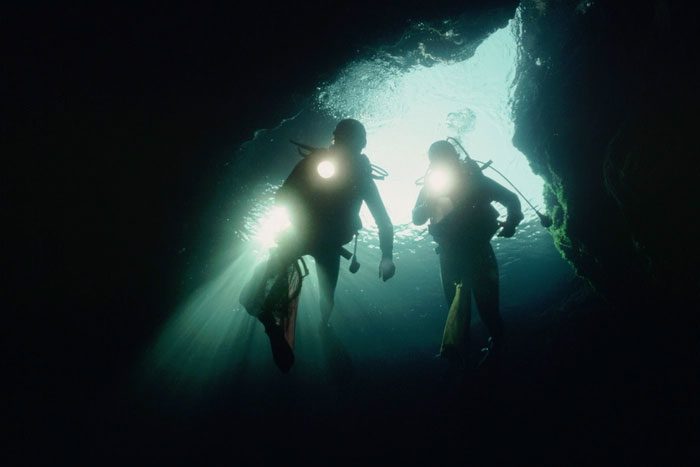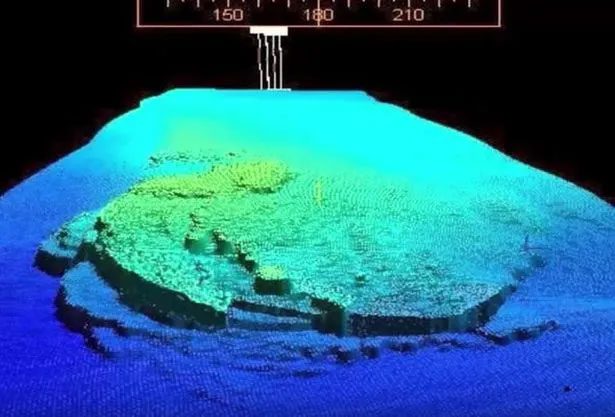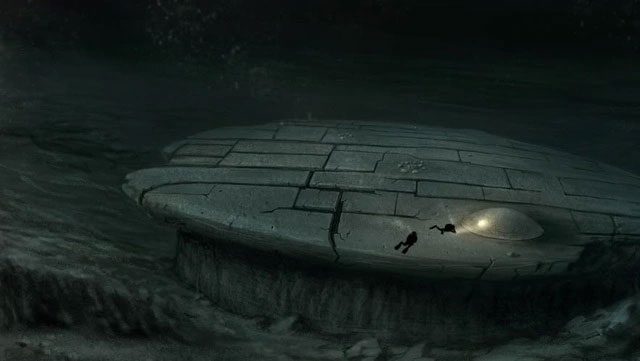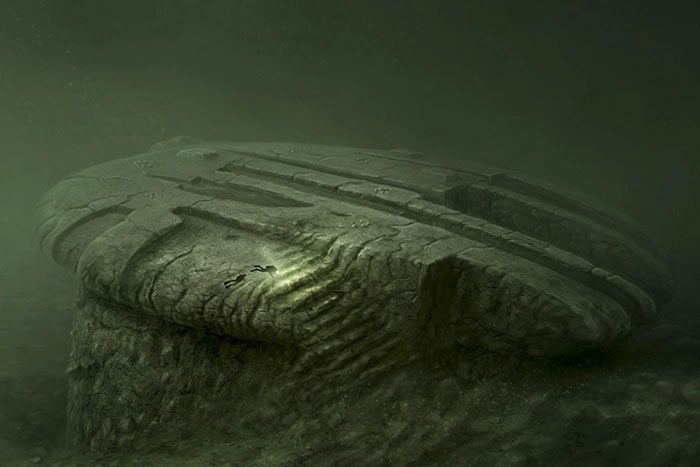At the bottom of the Baltic Sea, a mysterious disk lies hidden, measuring approximately 60 meters in diameter and about 4 meters in height, with smooth edges and a perfect arch, making it resemble a spacecraft.
This mysterious disk was accidentally discovered in 2001 by a professional salvage team, who faced numerous challenges and dangers in their quest to uncover its true identity.
After testing and research, they found that this disk is a metallic object that has been resting on the seabed for 140,000 years. So what exactly is this mysterious disk? Is it a relic of an ancient civilization or a spacecraft from an extraterrestrial visitor?

In June 2011, the Swedish professional salvage team Ocean X discovered the wreck of a liquor ship at a depth of about 90 meters in the Baltic Sea (Northern Europe). While using sonar equipment to search for rare champagne in the wreck, Ocean X detected a large circular object appearing on their screen.
In June 2001, a professional salvage team named Ocean X stumbled upon something incredibly mysterious while treasure hunting in the Baltic Sea.
Using sonar equipment, they found a gigantic disk measuring approximately 60 meters in diameter and about 4 meters high on the seabed. The disk looked very strange, not resembling a sunken ship, an airplane, or even a coral reef.
Its edges are so smooth and perfectly curved that it appears unnatural. Some people suggest that this disk bears a striking resemblance to the spacecraft seen in the movie “Star Wars.”
This discovery excited the salvage team immensely. They shared their findings on social media, and as soon as the news broke, it attracted widespread attention from the media and the public. Many believe that this large disk is a flying saucer. If so, it would be one of the greatest discoveries in human history.

The mysterious object, measuring about 60 meters in diameter and 4 meters in height, was discovered at a depth of 80 – 90 meters in international waters between Sweden and Finland.
The Ocean X salvage team did not immediately dive to inspect the disk after its initial discovery. Since it was getting dark and the ship was low on fuel, they decided to return to port, get a good night’s sleep, and come back fully prepared the next day.
The following day, to uncover the truth, the Ocean X team returned to the Baltic Sea after thorough preparations. Due to the complex environment, it would be more dangerous for team members to dive directly. Therefore, they decided to send a submersible to investigate first.
As the submersible approached the disk, suddenly, the submersible and all equipment on board malfunctioned. Team members immediately activated emergency procedures and steered the vessel away from the area.
When the vessel had traveled 200 meters, all equipment returned to normal operation. They tried multiple times, and the results remained the same. This indicates that within a 200-meter radius around the disk, there seems to be some unknown substance that interferes with various signals and electronic devices.

The site where the mysterious disk was discovered by the Ocean X salvage team – the Baltic Sea between Sweden and Finland.
This proves that the disk could not have formed naturally and is likely an artificial product. To uncover the truth, the Ocean X team chose an experienced diver to go underwater alone for reconnaissance.
To ensure that the equipment on board could function normally, they could only anchor the ship 200 meters away from the disk. Under the seabed, visibility was so low that divers could not see their hands, relying solely on their headlamps to slowly approach the gigantic disk.
The experienced diver, upon reaching the gigantic disk, took out his tools and intended to chip off a small sample to bring back for study. However, after just a few strikes, the headlamp suddenly went out, and the oxygen tank also ceased to supply air.
Instantly, the diver felt an overwhelming sense of fear as he swam back toward the ship while trying to communicate with his teammates, but the communication devices were partially disabled.
The crew on the ship could not hear what he was saying but guessed that something was wrong. Thus, the ship members quickly pulled the safety line attached to the diver and rescued him.

Since its discovery under the Baltic Sea in June 2011, the mystery of the strange object has continued to captivate those interested in it. There are many explanations regarding the object found by the Swedish diving team “Ocean-X.” Some believe it to be a meteorite, asteroid, or a UFO.
After a moment of silence, the team members began discussing whether they should return home. Some felt dissatisfied about coming back empty-handed and wanted to take another risk.
After a heated discussion, one diver decided to take the plunge once more to uncover the secrets lying beneath the seabed. Thus, he dove into the icy Baltic Sea and used all his strength to chip off a piece of rock from the gigantic disk.
The rock was carefully sent to a laboratory for testing and analysis, and the results were astonishing. Scientists in the lab found that these rocks contained a large amount of metallic elements such as titanium, iron, and manganese.
Even more surprisingly, the combination of these elements is very special and complex, not naturally occurring. By analyzing its composition, scientists deduced that it has been resting on the seabed for 140,000 years.

The hypothesis that modern scientists most support was proposed by Volker Bryuherta from Stockholm University (Sweden). According to him, it is merely a rock. The Baltic Sea has been affected by melting glaciers, and such rocks could have formed during that time. However, this theory cannot explain why phones, satellites, and machinery malfunctioned when they approached these rocks. Thus, it remains a significant mystery.
Shortly afterwards, they made another discovery. While reviewing several sonar images taken at that time, they found a long trail behind the mysterious disk. At the end of this trailing mark, another trail followed, extending from a different angle.
Following this continuous trace, they discovered a second disk, located about 200 meters away from the first. The members of the Ocean X salvage team speculated that this was a UFO that had crashed and split into two, sliding in two different directions, creating two trails. This speculation is very likely true, as a Swedish pilot once reported seeing a gigantic circular object hovering in mid-air while on a mission over the Baltic Sea.
As he prepared to fly over for inspection, the flying object suddenly ascended from an altitude of 1 kilometer above sea level to an altitude of 10,000 meters. He had never seen anything that could ascend so fast, and just as he was about to catch up, the object vanished into thin air.
Later, the Swedish pilot sketched the UFO he had seen. Interestingly, the UFO he drew closely resembles the gigantic disk captured by the Ocean X salvage team.
This miraculous coincidence further convinces the salvage team members that they have uncovered a mysterious historical relic hidden deep beneath the sea.
Due to a lack of manpower and financial resources, the Ocean X salvage team sought assistance from the Swedish military to recover the disk but was denied. However, it seems they have not given up and continue to dive to the seabed for research purposes.
However, due to the Baltic Sea’s unique geographical location, which makes it extremely treacherous with strong waves year-round, the disk has yet to be salvaged. The nature of the disk remains undetermined. It could be a relic or evidence of an ancient or extraterrestrial civilization.
No matter what the truth may be, this discovery is incredibly valuable and significant. It not only allows us to think deeply about the history and future of humanity but also guides us to understand more profoundly the mysteries of the universe and science.


















































